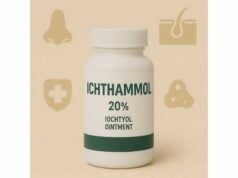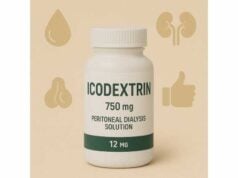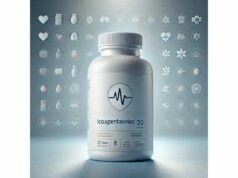
Ilex vomitoria—better known as yaupon holly—is the only caffeine-bearing plant native to North America that’s still commonly brewed as tea. Traditionally prepared as the “black drink” across the Southeastern United States, its young leaves and twigs are rich in xanthines (notably caffeine) and polyphenols that behave as antioxidants. Modern interest centers on yaupon’s clean, tea-like stimulation, potential mood and focus benefits, and its sustainable cultivation on marginal soils. At the same time, the plant’s botanical name can be misleading: “vomitoria” refers to historic ceremonial use, not an inherent emetic effect at ordinary doses. If you’re exploring yaupon as a coffee or tea alternative, this guide explains how it’s used, what’s in it, how much to take, and who should avoid it. You’ll also learn where the science stands today—what’s promising, what’s preliminary, and what’s simply marketing gloss.
Quick Overview
- Supports alertness and focus via caffeine; gentler stimulation than many coffees.
- Provides polyphenols that contribute antioxidant activity.
- Typical daily use: 1–3 cups of tea (about 2 g dried leaf per 250 ml per cup).
- Caffeine-related side effects possible; limit if sensitive or anxious.
- Avoid or use only with medical guidance during pregnancy, while breastfeeding, or if you have arrhythmias.
Table of Contents
- What is Ilex vomitoria?
- Does it work and key benefits?
- How to use: tea and extracts
- Dosage: how much per day?
- Safety, interactions, and who should avoid
- Evidence: what science says
- References
What is Ilex vomitoria?
Ilex vomitoria Aiton (yaupon holly) is a broadleaf evergreen shrub native to the coastal plain of the southeastern United States. It’s a member of the holly family (Aquifoliaceae) and a close relative of other caffeine-bearing hollies such as Ilex paraguariensis (yerba mate) and Ilex guayusa (guayusa). Unlike coffee, yaupon’s caffeine comes from its leaves and young twigs, which are harvested, lightly roasted or pan-fired, and brewed like green or oolong tea. The resulting infusion is smooth, herbaceous, and naturally low in bitterness compared with many coffees.
Chemically, yaupon contains a trio of xanthines—caffeine (the primary stimulant), theobromine (familiar from cocoa), and small amounts of theophylline. These compounds account for yaupon’s mental alertness effects and mild diuretic action. Leaves also contain phenolic acids and flavonoids that contribute antioxidant capacity and may explain the beverage’s gentle astringency. In some specimens, researchers have even identified theacrine, a rarer xanthine that can subtly modify the feel of caffeine’s stimulation. Because composition varies with plant genetics, leaf age, season, and soil, different batches of yaupon can taste and feel slightly different while still delivering a tea-like lift.
Historically, Southeastern Indigenous communities brewed yaupon as a social and ceremonial drink. The Latin name “vomitoria” traces to early colonial descriptions of ritual fasting and purging; it does not mean yaupon is emetic at normal beverage doses. Today, small farms and foragers are reviving yaupon as a sustainable, drought-tolerant crop that supports pollinators, requires minimal inputs, and can be harvested year-round.
In everyday use, people treat yaupon like tea: a morning or early-afternoon cup to clear brain fog, a pre-workout mug for steady focus, or a mid-study brew to stave off mental fatigue. If you like green tea or yerba mate but prefer a local, low-tannin alternative, yaupon often fits that niche.
Does it work and key benefits?
When people ask whether yaupon “works,” they’re usually asking about alertness, mood, and energy. On those fronts, yaupon functions much like other moderate-caffeine teas:
- Alertness and reaction time. Caffeine blocks adenosine receptors in the brain, reducing perceived fatigue and improving vigilance. Many users notice a cleaner rise—fewer jitters—than they get from strong coffee, likely because a typical yaupon cup delivers a moderate caffeine dose along with polyphenols that slow absorption.
- Mood and motivation. Mild doses of caffeine can increase subjective energy and task motivation. Theobromine, though weaker as a stimulant, may add a gentle mood-brightening effect and vasodilation that some experience as “calm focus.”
- Antioxidant support. Yaupon’s phenolic profile contributes antioxidant capacity in vitro and in cell models. This isn’t a claim of disease treatment; it’s a plausible mechanism for mitigating routine oxidative stress from exercise, long workdays, or caloric excess.
- Digestive comfort. Compared with coffee, yaupon’s lower acidity and different polyphenols are often easier on the stomach. People who experience reflux from coffee sometimes tolerate yaupon better, especially when brewed more like a green tea (cooler water, shorter steep).
- Sustainable caffeine source. Beyond human physiology, yaupon’s agricultural profile is a benefit in its own right: minimal fertilization needs, tolerance of poor soils, and native ecology that supports beneficial insects. For consumers who want to reduce dependence on imported caffeine crops, yaupon offers a regionally sourced option.
It’s important to calibrate expectations. Yaupon doesn’t out-perform coffee for raw stimulation, nor is it a proven therapy for specific health conditions. Instead, think of it as a balanced, tea-like caffeine source that combines steady mental energy with good tolerability and a clean flavor profile. If you’re switching from coffee, many people find that one cup of yaupon provides noticeable clarity without the crash—particularly when paired with a protein-rich breakfast or a light snack.
How to use: tea and extracts
Leaf type. You’ll encounter two main styles: green yaupon (briefly pan-fired to halt oxidation, grassy and bright) and roasted yaupon (darker roast that softens herbaceous notes and adds light caramel). Both brew easily in a mug, teapot, French press, or gaiwan.
Basic cup (single infusion).
- Measure 2 grams of dried yaupon leaf (about 1 heaping teaspoon of medium-cut leaves).
- Heat 250 ml of water to 80–90°C (175–195°F). Cooler water highlights sweetness; hotter water yields a stronger, brisker cup.
- Steep 3–5 minutes; strain and taste. Shorter steeps emphasize smoothness; longer steeps increase bite and caffeine per cup.
Multiple infusions (tea style).
- Use 3–4 grams leaf in 250 ml water at 80–85°C (175–185°F).
- Steep 1 minute for the first cup; add 15–30 seconds for subsequent steeps.
- Expect 2–3 flavorful infusions from quality leaf.
Cold brew (lowest bitterness).
- Combine 6–8 grams leaf per 1 liter cold water.
- Refrigerate 8–12 hours; strain. Cold brew concentrates aromatics with a softer caffeine delivery. Keeps 24–48 hours chilled.
Convenience formats.
- Tea bags: Typically pre-portioned at 1.5–2.0 g per bag; brew as above.
- Loose leaf pyramids: Offer better expansion and stronger flavor than flat bags.
- Extracts/tinctures: Liquid or encapsulated extracts exist, often standardized to caffeine or polyphenols. Because standards vary by brand, follow the label and start at the low end.
Flavor pairing and preparation tips.
- Add a citrus twist (lemon/orange peel) or a sprig of spearmint for a brighter profile. A small pinch of sea salt can soften astringency in iced versions.
- For a latte, brew a double-strength hot cup (4 g per 250 ml, 3 minutes), then top with 100–150 ml warm milk or a milk alternative.
- To reduce caffeine late in the day, do a 30-second rinse with hot water, discard the rinse, then brew as usual. This removes a portion of surface caffeine and moderates the first cup.
Storage. Keep yaupon in an airtight container away from heat, light, and humidity. Use within 6–12 months for best aromatics. Roasted styles have slightly longer shelf life than green styles due to reduced enzymatic activity.
Dosage: how much per day?
Because yaupon is a food-like beverage rather than a drug, dosage is typically expressed as cups per day or grams of dried leaf rather than milligrams of a single active compound. A practical approach:
- Starter range: 1 cup daily brewed with ~2 g leaf in 250 ml water.
- Typical use: 1–3 cups per day, spaced 4–6 hours apart.
- Higher end (experienced users): 4 cups per day if you tolerate caffeine well and don’t experience side effects.
Translating cups to caffeine exposure is imprecise because leaf chemistry and brew method vary. As a conservative planning anchor, treat a standard 2 g hot infusion as roughly similar to a light cup of green tea in feel. If you’re caffeine-sensitive, begin with half-strength (1 g per 250 ml) or switch to cold brew, which many find smoother.
Timing. For most people, the sweet spot is morning to early afternoon. Avoid the 6–8 hours before bedtime to protect sleep quality. If you fast or exercise early, drinking yaupon with food or electrolytes can temper jitters.
Stacking with other caffeine sources. If you also drink coffee, tea, cola, or take caffeine-containing supplements, total daily caffeine adds up quickly. Keep a rough tally to stay within widely accepted moderation thresholds for healthy adults. If you have cardiovascular, sleep, or anxiety concerns, set a lower personal cap and discuss it with a clinician.
Cycling. If daily use blunts yaupon’s effects, consider 2 caffeine-light days per week or shift to half-strength brew for a week to reset sensitivity.
Special populations. For pregnancy, breastfeeding, adolescents, and people with arrhythmias, hypertension, GERD, or generalized anxiety, lower targets—or avoidance—are prudent. See the safety section for specifics.
Safety, interactions, and who should avoid
Common side effects (dose-related).
- Restlessness, jitteriness, or anxiety. More likely with fasted use, large cups, or strong hot infusions.
- Insomnia. Caffeine’s half-life averages 3–7 hours but varies widely; late-day cups can interfere with sleep.
- GI upset or reflux. Brew cooler (80–85°C), use shorter steeps, or switch to cold brew if your stomach is sensitive.
- Increased urination. Caffeine has a mild diuretic effect; balance with fluids and electrolytes.
Less common.
- Palpitations in susceptible individuals.
- Headaches with overuse or rapid withdrawal.
- Exacerbation of heartburn in those with GERD.
Drug and nutrient interactions.
- Stimulants and decongestants (e.g., pseudoephedrine): additive stimulation.
- Asthma medications (theophylline): theoretical additive effects; monitor.
- Anticoagulants/antiplatelets: caffeine itself doesn’t strongly interact, but discuss with your prescriber if you take warfarin, DOACs, or antiplatelets, especially if you also use other herbs.
- Iron absorption: as with many polyphenol-rich teas, drinking yaupon with iron-rich meals may reduce non-heme iron absorption. Separate by 1–2 hours if you’re iron-deficient.
Who should avoid or use only with medical guidance.
- Pregnancy or breastfeeding: use caution with total caffeine; many clinicians recommend lower daily limits than for the general adult population.
- Cardiac arrhythmias, uncontrolled hypertension, or panic/anxiety disorders: avoid high doses; some individuals do best with decaffeinated or caffeine-free alternatives.
- Children and adolescents: limit exposure; prioritize sleep and hydration over stimulants.
- Severe reflux or active peptic ulcers: hot, strong infusions may aggravate symptoms.
- Known caffeine sensitivity (e.g., CYP1A2 slow metabolizers): choose half-strength or avoid.
Quality and adulteration.
- Purchase from reputable suppliers who process Ilex vomitoria (not ornamental hollies or unrelated species). Proper drying and light roasting/pan-firing help remove grassy off-notes and improve safety by reducing moisture.
Allergy.
- Allergic reactions to yaupon are uncommon but possible. Discontinue if you notice rash, itching, wheeze, or swelling.
Myth check: the name “vomitoria.”
- The species epithet reflects historical ritual practices, not a pharmacological emetic effect at beverage doses. If yaupon makes you nauseated, it’s far more likely due to over-strong brewing, empty-stomach use, or individual caffeine sensitivity.
Evidence: what science says
Chemical profile and variability. Comparative metabolomics of caffeine-bearing hollies place Ilex vomitoria among a small group of New World species that synthesize caffeine, theobromine, and—occasionally—theacrine. These studies also show that chemistry varies with species and even with growing conditions. In yaupon, nitrogen availability and leaf age can change total phenolics and xanthine levels, which helps explain why one harvest feels punchier than another.
Functional properties in models. Laboratory work with yaupon infusions demonstrates antioxidant capacity and cytoprotective effects in cell systems. For example, leaf infusions have reduced oxidative markers and impeded proliferation of certain colon cancer cell lines in vitro. Those are model findings; they don’t translate directly into clinical outcomes, but they do support the idea that yaupon’s polyphenols contribute more than flavor alone.
Human-level evidence. There are no large, controlled human trials specifically testing yaupon holly tea for defined health endpoints. In practice, expectations are borrowed from the broader caffeine and tea literature: modest improvements in alertness, vigilance, and perceived fatigue; potential exercise benefits in some individuals; and sleep disruption or anxiety in others if timing or dose is off. Until yaupon-specific trials are published, it’s prudent to frame yaupon as a tea-like caffeine beverage with antioxidant polyphenols rather than as a therapy.
Historical and cultural context. Archaeochemical evidence confirms that caffeine-bearing Ilex species were consumed widely in ancient North America as the “black drink,” likely for social cohesion, ceremony, and sustained attention. This context complements, but doesn’t replace, modern safety standards for everyday use.
Safety thresholds for caffeine. For healthy, non-pregnant adults, widely cited scientific risk assessments consider moderate daily caffeine exposure to be compatible with general safety. Individual factors—body mass, metabolism, medications, anxiety, cardiovascular status, and sleep habits—push personal thresholds up or down. For pregnancy, many experts urge a substantially lower daily limit, emphasizing caution.
Bottom line. Yaupon is best understood as a regional, sustainable source of moderate caffeine with a pleasantly tea-like profile and supportive antioxidant chemistry. Use it for focus and enjoyment. Keep claims grounded, dose sensibly, and personalize based on how your body responds.
References
- LC-MS Metabolomics and Chemotaxonomy of Caffeine-Containing Holly ( Ilex) Species and Related Taxa in the Aquifoliaceae 2018 (Chemistry)
- Ritual Black Drink consumption at the Mississippian period site of Cahokia (AD 1050–1350) 2012 (Archaeochemistry)
- Antiproliferative and antioxidant activities of yaupon holly (Ilex vomitoria) leaf infusions in human colon cell lines 2011 (In vitro)
- Scientific Opinion on the safety of caffeine 2015 (Safety assessment)
Disclaimer
This article is for educational purposes only and is not medical advice. Yaupon holly and caffeine are not intended to diagnose, treat, cure, or prevent any disease. Always speak with a qualified healthcare professional before starting or changing any supplement or beverage routine, especially if you are pregnant or breastfeeding, have a medical condition, take prescription medications, or are sensitive to caffeine. If you experience palpitations, anxiety, insomnia, rash, or other concerning symptoms, discontinue use and seek medical guidance.
If you found this guide helpful, please consider sharing it on Facebook, X (formerly Twitter), or your preferred platform, and follow us for future evidence-based articles. Your support helps us continue producing thoughtful, high-quality content.










